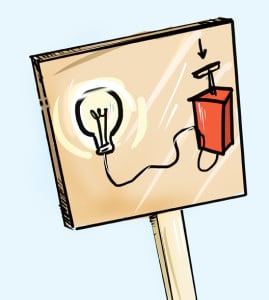A recent study by the California Association of Scholars has opened a vigorous debate among professors about the meaning of a liberal education: Is a liberal education about learning all sides of the argument or should it lean more toward student activism? The debate also touches on whether party affiliation of professors affects the traditional educational environment.
Stanford Hoover Senior Fellow Peter Berkowitz responded to the study in a March 30 op-ed in the Wall Street Journal, stating that the political affiliations of faculty members motivates them to focus more on teaching students to become agents of social changes at the expense of focusing on coursework that is faltering in quality.
The study reads, “When individual faculty members and sometimes even whole departments decide that their aim is to advance social justice as they understand it rather than to teach the subject that they were hired to teach with all the analytical skill that they can muster, the quality of teaching and research is compromised.”

Robert Anderson, UC-Berkeleyeconomics and math professor and chairman of the system-wide Academic Senate, said that the study puts forward a lot of allegations that are not supported by the facts presented, because its main claim is that faculty members’ leftward political leanings decrease the quality of undergraduate education.
“I think the study as a matter of social science is completely flawed because the fact that two things happen simultaneously does not imply that one causes the other,” Anderson said. “The only real evidence they provide is that the party registration of faculty is significantly leaning towards Democrats.”
Anderson said that party affiliation is not something he sees as a factor in hiring faculty because it would violate Article IX, Section 9 of the California State Constitution, which reads, “The university shall be entirely independent of all political or sectarian influence and kept free therefrom.”
Anderson added that the reason for such a significant Democratic presence among faculty has to do with democratic ideals.
“It’s people who are more concerned with increasing the welfare of the society in general who tend to be Democrats and who would most likely go into university teaching,” Anderson said.
“While political affiliation alone need not carry classroom implications, the overwhelmingly left-leaning faculty openly declare the inculcation of progressive political ideas their pedagogical priority,” Berkowitz wrote.
He wrote that the study brings attention to why professors must avoid introducing discussion opinions extraneous to the subject to provide a well-rounded treatment of the matter under consideration.
“That opens the classroom to whatever professors wish to talk about,” Berkowitz wrote. “And in all too many cases what they wish to talk about in the classroom is the need to transform America in a progressive direction.”
However, Jeff Chang, executive director of Stanford’s Institute for Diversity in the Arts, said allowing for students to gain tools for becoming agents of change is part of what a liberal education can provide.
“Liberal education is an education in which people are exposed to many different kinds of viewpoints and get to think critically about themselves in society, and they get to ask the big questions of the world,” Chang said. “If you challenge some kind of information and points of view, that inspires you to think deeper about where you stand in relationship to those particular positions.”
Chang also said that political expression on behalf of the students as agents of change does not conflict with their academic environment.
“Often action and activism is a natural outgrowth of this thought process that’s been engendered in the education process,” Chang said. “People can argue that any kind of political activity is sectarian, and I think that would be too narrow and literal a reading of that particular section of the [State] Constitution.”
Chang currently leads the Occupy Art class series at Stanford that explores the shifting meanings of the term “occupation.”
“It’s a direct way of being able to have students talk about big ideas with events that are happening at this particular moment, and it’s a way for students to engage with and find connections to debate with, to have arguments with, social movements that are rising up,” Chang said.
Anderson said that he agrees with Chang’s idea of the role of political expression on a campus with liberal education as its model.
“I think the goal of a liberal education is to expose undergraduates to a wide variety of disciplines to help them concentrate in one of those to become a knowledgeable citizen of the United States,” Anderson said. “Part of being a good citizen is to be aware of the current political and social issues in your country.”